The Country of France is set to honor the Great Lalique with the opening of the new Musée Lalique to the public on July 2nd. This is the second in a series of articles about the new Lalique Museum structured around a long running interview with the Director of the new Museum, Veronique Brumm. Lalique Museum Opening will take you to the first article in this series! As you will learn below, the new Musée Lalique is not just a Lalique Museum in France. It is a Lalique Museum of France.
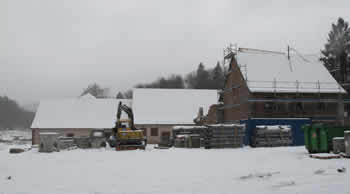 In our first article, we presented some photos of the site that would become the new Musée Lalique, and the architect’s concept of what the final project would look like. We accompany this article with photos of the Musée in progress as it moves from that original site toward the architectural plan. This is basically our “nuts and bolts” article, where we show the nuts and bolts of the construction of the Museum, and where we talk with Veronique about the nuts and bolts of the organization that created the Museum.
In our first article, we presented some photos of the site that would become the new Musée Lalique, and the architect’s concept of what the final project would look like. We accompany this article with photos of the Musée in progress as it moves from that original site toward the architectural plan. This is basically our “nuts and bolts” article, where we show the nuts and bolts of the construction of the Museum, and where we talk with Veronique about the nuts and bolts of the organization that created the Museum.
We left off the introduction to the interview in our first article with Veronique explaining that she is an historian by training, with a specialty in glassmaking in the very region where Rene Lalique established his glass factory after World War 1.
Veronique, can you tell us more about your background?
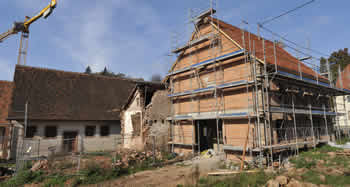 In my training, I was not only interested in the history of glassmaking in Wingen-sur-Moder, where the Lalique factory is still operating today, but also in that of Saint-Louis whose reputation speaks for itself; Meisenthal, known for having worked for Emile Gallé; and Goetzenbruck, which specialised in watch glasses and later in optical glass.
In my training, I was not only interested in the history of glassmaking in Wingen-sur-Moder, where the Lalique factory is still operating today, but also in that of Saint-Louis whose reputation speaks for itself; Meisenthal, known for having worked for Emile Gallé; and Goetzenbruck, which specialised in watch glasses and later in optical glass.
I then did a masters on the professions of cultural development and tourism. In this context, I undertook an internship at the Glass Centre at the Museum of Decorative Arts in Paris, an internship that confirmed my interest in glass.
I complemented this professional masters with a masters oriented towards research. It covered the development of the glass and crystal making heritage in Lorraine. I then chose to do a doctorate in information and communication sciences focusing on museology and cultural mediation. The subject of my thesis was the development of the heritage of the glass and crystal making industry in Europe. In this context, I looked into what makes us come to consider an industry, in this instance glass and crystal making, as a form of heritage and the way this manifests itself.
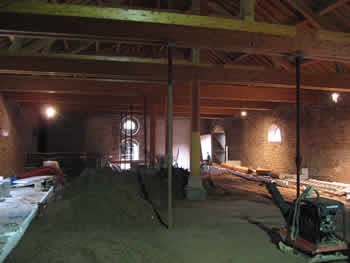 After completing my studies, I had the opportunity to work with the Conseil Général du Bas-Rhin. In the context of this mission, I was the curator of a Lalique exhibition held during the summer of 2006 at the Château de Lichtenberg, a few kilometres from Wingen-sur-Moder. I then had the good luck to cultivate an interest in the scientific aspects of the museum project. Gradually, my tasks have become more diversified.
After completing my studies, I had the opportunity to work with the Conseil Général du Bas-Rhin. In the context of this mission, I was the curator of a Lalique exhibition held during the summer of 2006 at the Château de Lichtenberg, a few kilometres from Wingen-sur-Moder. I then had the good luck to cultivate an interest in the scientific aspects of the museum project. Gradually, my tasks have become more diversified.
Veronique, what have been your duties in conjunction with the Musee up until this time (June 2011)?
As project leader, my tasks are particularly varied. I continue to work on the scientific aspects: putting the collection together, research on René, Suzanne, Marc and Marie-Claude Lalique, on techniques, definition of the museum tour, writing the texts for the museum and more.
In addition, I’m very involved with the building site and work closely with the architects in order that the museum makes it possible not only to display Lalique’s works in the best light possible, but is also functional.
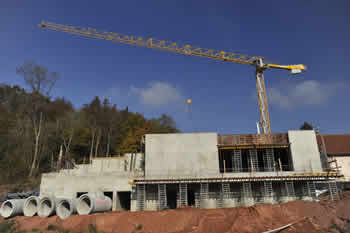 I’m also busy with the administrative and financial aspects of the project. This means, for example, that I prepare and monitor all decisions taken by the Board of Directors, that I prepare the budget, handle requests for subsidies, and other similar matters.
I’m also busy with the administrative and financial aspects of the project. This means, for example, that I prepare and monitor all decisions taken by the Board of Directors, that I prepare the budget, handle requests for subsidies, and other similar matters.
The question of partnerships is also one of my major concerns, whether these are partnerships with the project’s backers, the Lalique Company, the lenders, etc.
How is the museum structured for operations? Do you report to a board of directors? Do you have a staff? Are there public officials involved? Is it a non-profit organization? How is the museum funded?
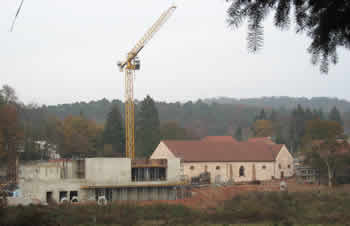 The Musée Lalique is a public project, supported by the local authorities: Région Alsace, Département du Bas-Rhin, Communauté de Communes du Pays de La Petite Pierre and Commune de Wingen-sur-Moder.
The Musée Lalique is a public project, supported by the local authorities: Région Alsace, Département du Bas-Rhin, Communauté de Communes du Pays de La Petite Pierre and Commune de Wingen-sur-Moder.
These authorities have joined forces to create the Syndicat Mixte du Musée Lalique. Today, this is the client for the project and, in the future, it will be responsible for its management.
These authorities handle funding for the project of 11.3 million euros with support from the State and from Europe. Therefore, although we have an excellent relationship with the Lalique Company, we are not a company museum.
Our organisation is non-profit making. The authorities mentioned previously have even put their heads together to ascertain on which cost allocation base it would fund a possible operating shortfall.
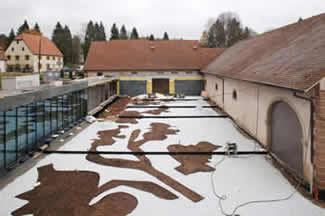 For the administrative organisation of the Syndicat Mixte, I should say that it’s managed by a Board of Directors composed of eleven members representing the four financial backers. It is chaired by a President, Mr Gaston Dann, and two Vice-Presidents. It is to them who I report on my work.
For the administrative organisation of the Syndicat Mixte, I should say that it’s managed by a Board of Directors composed of eleven members representing the four financial backers. It is chaired by a President, Mr Gaston Dann, and two Vice-Presidents. It is to them who I report on my work.
Regarding the team, there are four of us at the present time (February 2010): two part-time staff in the secretariat, a conservation assistant and a person in charge of tourist promotion and communication.
Is the Musée Lalique a National Museum sanctioned by the French government? And if so, what benefits does the National Museum status provide?
The Musée Lalique was awarded the “Musée de France” appellation (name or title) in 2007. Therefore, it isn’t a National Museum administered directly by the State, but the “Musée de France” label testifies to the quality of the project, both from the point of view of its collections and the conditions of preventive conservation and security. In France, this label is the sine qua non for securing loans or deposits from other museums.
The “Musée de France” appellation also enables us to take advantage of financial support from the Fonds Régional d’Acquisition pour les Musées, in other words State subsidies for acquisitions.
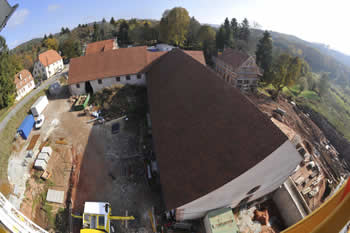 Veronique, so that our readers will understand the importance of the “Musée de France” designation, can you tell us the names of some of the other Musées de France?
Veronique, so that our readers will understand the importance of the “Musée de France” designation, can you tell us the names of some of the other Musées de France?
Among the other museums with the “Musée de France” label, we should mention the Louvre, the Museum of Decorative Arts, the Musée d’Orsay and the Quai Branly museum in Paris.
An interviewer’s note that it was the Museum of Decorative Arts which purchased several works directly from Rene Lalique himself in the early 1900’s; its curators having the foresight to recognize the great treasure of France even 100 years ago. And it is with Veronique’s mention of the lofty company of the world class museums in which the Musée Lalique finds itself, that we depart this interview for now, until the publication of the next article in this series (article 3) which will appear shortly.
Photo Credits:
Snow Photo: Musée Lalique
Scaffold Photo: Communauté de Communes du Pays de La Petite Pierre
Inside Photo: Musée Lalique
Crane Photo 1: Stadler
Crane Photo 2: Musée Lalique
Courtyard Photo: Musée Lalique
Overhead View Photo: Stadler
All Articles on These Topics: R Lalique and Rene Lalique News, Rene Lalique Museums: R Lalique Museum Collections

